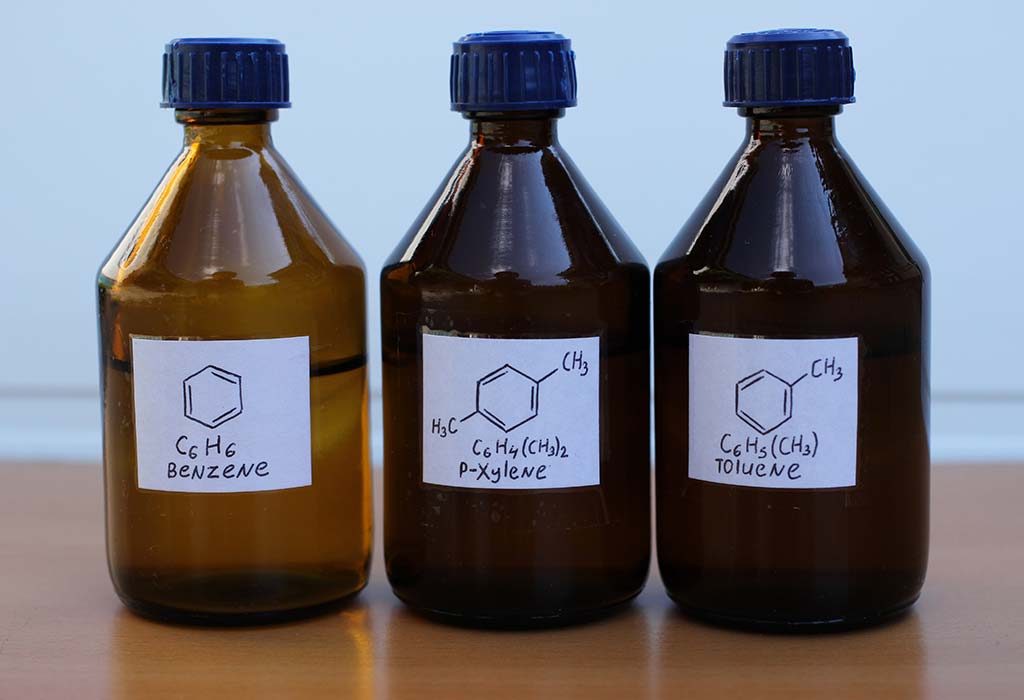Benzene, toluene, and xylene, commonly referred to as BTX, are aromatic hydrocarbon compounds that are widely used in manufacturing. While they provide many benefits to industry and consumer goods, BTX also pose risks to human health and the environment if improperly handled. This article will explore the uses, properties and health effects of BTX, as well as regulations around their production and disposal.
What are Benzene, Toluene, Xylene?
Benzene, toluene, and xylene are collectively known as BTX. They are composed of carbon and hydrogen atoms arranged in rings, giving them their classification as aromatic hydrocarbons.
Benzene is a colorless, flammable liquid with a sweet odor. It evaporates easily and is highly volatile. Benzene’s chemical formula is C6H6. It is utilized as a starting material and solvent in making plastics, resins, nylon, synthetic fibers and other materials.
Toluene is a water-insoluble liquid with a smell similar to paint thinners. Its chemical formula is C7H8. Toluene is used chiefly as an industrial feedstock and solvent, including in the production of paints, adhesives, rubber, and pharmaceuticals.
Xylene has three structural isomers – ortho-xylene, meta-xylene, and para-xylene. All are colorless, flammable liquids, though they differ in boiling points and densities. Xylenes are identified by the chemical formula C8H10. They are typically used as solvents and in gasoline. Para-xylene is also used to manufacture polyester fibers, plastics and packaging materials.
Health Effects of BTX Exposure
While providing useful properties in manufacturing, BTX also pose health risks if inhaled or absorbed through the skin or eyes in sufficient amounts. Acute (short-term) exposure to high concentrations can cause dizziness, drowsiness, headaches, eye and respiratory irritation. Prolonged or repeated exposures over time may lead to more serious health issues.
Benzene is a known human carcinogen (cancer-causing agent) associated with the development of leukemia and other blood cancers. The US Department of Health classifies benzene as a proven human carcinogen.
Toluene exposure has been linked to damage to the central nervous system, kidneys, and liver in humans. Prolonged toluene inhalation may cause fatigue, confusion, weakness, drunken-type actions, memory loss, unconsciousness, and even death.
Breathing high levels of xylenes may cause dizziness, headaches or eye/nose/throat irritation. It can damage the Central Nervous System and impact the liver and kidneys over time. The International Agency for Research on Cancer has determined that some xylene compounds present a cancer risk with repeated exposures.
Regulations on BTX Production and Disposal
Due to the risks posed by exposure, governments worldwide have enacted regulations controlling the production, use, storage and disposal of BTX. Facilities producing or utilizing BTX are subject to environmental permits and must demonstrate proper handling procedures.
The US Environmental Protection Agency (EPA) designates benzene as a hazardous air pollutant, requiring strict limits on industrial emissions. The EPA’s National Emission Standards for Hazardous Air Pollutants regulate benzene production processes.
Occupational Safety and Health Administration (OSHA) standards establish exposure limits and safety requirements for workers who may come in contact with BTX. This includes requirements for protective equipment, monitoring, medical surveillance and hazardous communication training.
The transportation and disposal of BTX also face rigid controls. The Department of Transportation regulates quantities that can be transported and the containers used. The Resource Conservation and Recovery Act sets rules for the treatment, storage and disposal of BTX wastes to prevent environmental contamination. Ongoing monitoring seeks to ensure compliance.
Benzene, toluene and xylene provide many uses across industries but also entail health and environmental risks that require prudent handling and regulation. As long as production and waste disposal processes follow established safety protocols, society can continue benefitting from goods reliant on BTX. However, unchecked exposures could lead to negative health consequences. Ongoing research also works to develop substitute compounds where feasible. Through balanced policies, both economic progress and public well-being can be safeguarded.
*Note:
1. Source: Coherent Market Insights, Public sources, Desk research
2. We have leveraged AI tools to mine information and compile it

